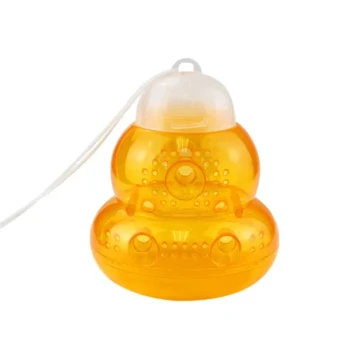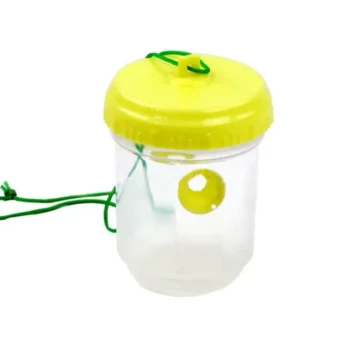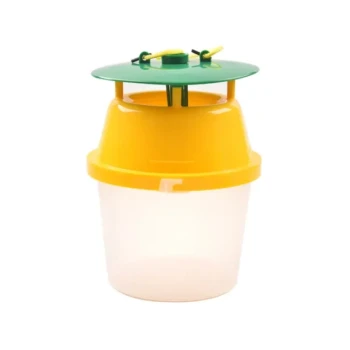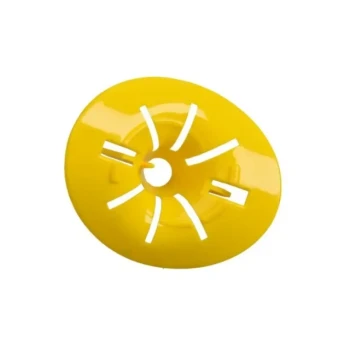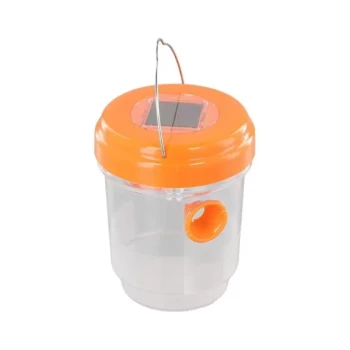To improve the effectiveness of Beetle Blasters, you must ensure they sit perfectly flush between the top bars of your hive frames. This is achieved by scraping away any propolis or wax buildup first. This tight fit eliminates alternative paths, forcing the Small Hive Beetles (SHB) to walk over the trap's edges and fall into the oil-filled reservoir.
The success of a Beetle Blaster trap is not in its presence, but in its placement. Its effectiveness hinges on creating an unavoidable path for beetles that are naturally seeking dark, tight spaces to hide from honey bees.
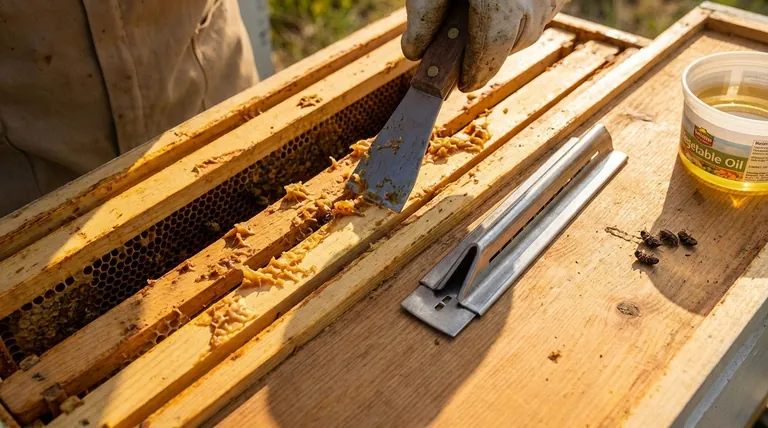
The Principle: Exploiting Beetle Instincts
Small Hive Beetles are governed by a simple, powerful instinct: to escape harassment from bees by hiding in the nearest dark crevice. A properly placed Beetle Blaster uses this behavior against them.
Understanding the Beetle's Goal
Beetles are constantly pursued by bees within the hive. Their primary survival strategy is to run and find a crack or gap where bees cannot reach them.
How the Trap Mimics a Hiding Spot
The design of the Beetle Blaster creates an invitingly dark, narrow opening. Beetles perceive this as a safe haven and make a direct line for it.
The Critical Role of a Flush Fit
If the trap is not sitting perfectly flat on the top bars, a small gap will exist underneath the trap's flange. The beetle, seeking the path of least resistance, will simply crawl under the trap instead of over the edge and into it, rendering the trap useless.
A Step-by-Step Guide to Flawless Placement
Correctly setting the trap is a quick process that dramatically increases its capture rate.
Step 1: Prepare the Surface
Use your hive tool to thoroughly scrape the top bars of the two frames where the trap will sit. Remove every bit of excess wax and propolis until the wood is smooth.
Step 2: Choose the Right Location
Place the traps toward the outer edges of the hive body, such as between frames 1 and 2, or 9 and 10. Beetles often congregate in these peripheral areas to avoid the main cluster of bees.
Step 3: Fill the Reservoir Correctly
Fill the trap no more than halfway with a non-perishable oil, such as vegetable oil or mineral oil. Overfilling can allow beetles to crawl out. Adding a small drop of apple cider vinegar can act as a lure.
Step 4: Set the Trap and Confirm the Seal
Press the trap down firmly between the frames. Visually inspect it to ensure there are no gaps between the trap's plastic flange and the wooden top bars. It should be a tight, seamless fit.
Understanding the Trade-offs and Limitations
Beetle Blasters are an effective tool, but they are not a complete solution. Understanding their limitations is key to a successful Integrated Pest Management (IPM) strategy.
They Trap, They Don't Eliminate
These traps capture adult beetles, which helps reduce the population and prevent egg-laying. However, they do not address beetle larvae already developing in the hive.
Effectiveness Depends on a Strong Colony
A strong, populous honey bee colony is the number one defense against SHB. Traps are a supportive tool, but they cannot save a weak hive that is already overwhelmed. A weak hive simply doesn't have enough bees to police the beetle population effectively.
They Require Regular Maintenance
The traps must be checked, cleaned, and refilled during your regular hive inspections. A trap full of dead beetles will no longer be effective and must be serviced.
Making the Right Choice for Your Goal
Your approach to using Beetle Blasters should align with the specific needs of your colony.
- If your primary focus is routine prevention: Place one or two properly seated traps in the corners of your top-most hive body as a monitoring tool and preventative measure.
- If you are dealing with a known infestation: Use multiple traps (3-4) in the upper brood box and combine this with other control methods, like reducing entrance size and ensuring a clean bottom board.
Ultimately, a well-placed trap is a powerful component of a proactive hive management strategy.
Summary Table:
| Key Factor for Success | Action Required |
|---|---|
| Flush Fit | Scrape top bars clean of wax/propolis before placement. |
| Location | Place traps in the corners of the hive body (e.g., frames 1-2 or 9-10). |
| Fill Level | Fill reservoir halfway with oil; a drop of apple cider vinegar can help. |
| Maintenance | Check, clean, and refill traps during regular hive inspections. |
Need reliable, high-quality Beetle Blasters and other essential beekeeping supplies for your commercial apiary or distribution business? HONESTBEE provides durable, effective equipment designed for the demands of professional beekeeping. Our wholesale-focused operations ensure you get the tools you need to protect your hives and your investment. Contact HONESTBEE today to discuss your supply needs and strengthen your Integrated Pest Management strategy.
Visual Guide
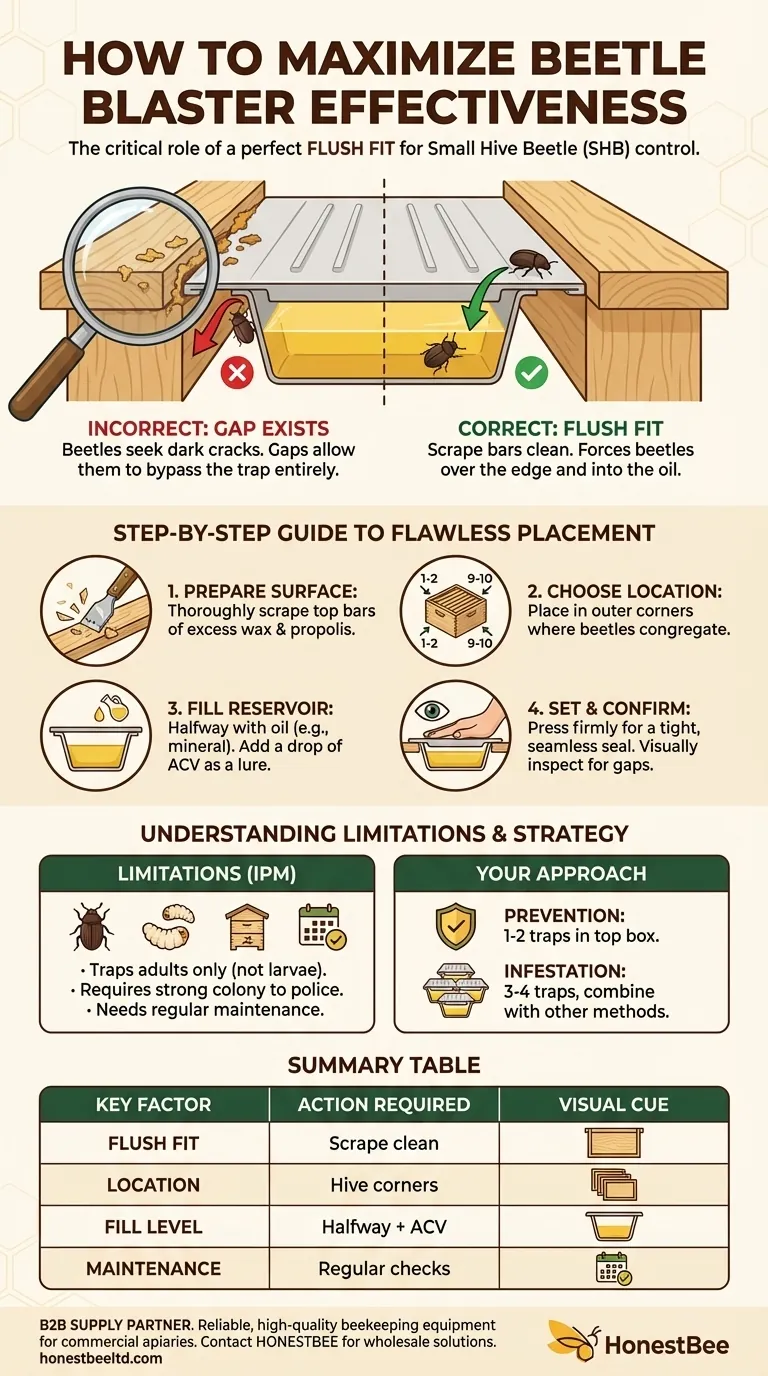
Related Products
- Reusable Aluminium Beetle Trap for Small Hive Beetles Silver Bullet
- Plastic Beetle Blaster Trap Beekeeping Tools and Supplies
- Reusable Clear Small Hive Beetle Traps for Beehives Beetle Trapping Tools
- Removable Washable Hive Beetle Trap Attractants for Small Hive Beetles
- Black Plastic Beetle Barn Hive Beetle Trap for Beehives
People Also Ask
- How should filled beetle traps be handled? Safely Remove and Dispose to Protect Your Hive
- How do Beetle Blasters trap adult beetles? A Simple, Non-Chemical Pest Control Solution
- What are the chemical-free options for trapping hive beetles? Control Pests Without Chemicals
- What are the steps for installing hive beetle traps? A Guide to Effective Beetle Control
- Where is the ideal placement for Beetle Blasters in a hive? Maximize Control with Strategic Positioning






